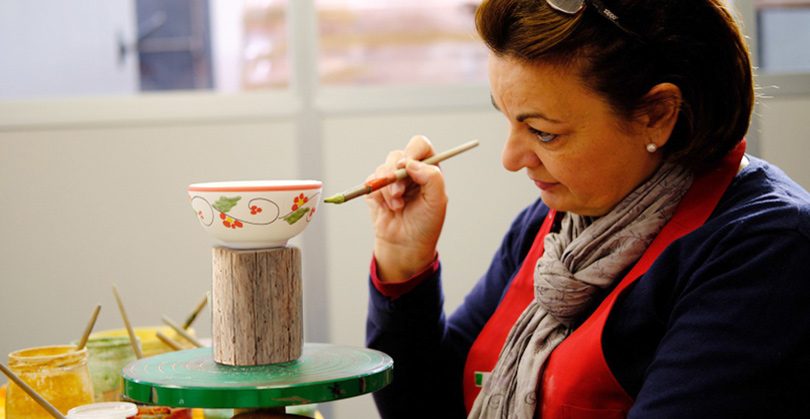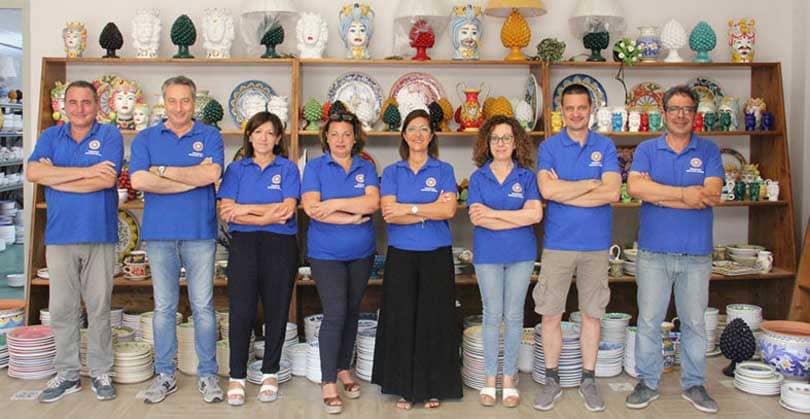
Custom Sicilian ceramics
Custom Sicilian pottery? Upon request you can request your own customization on all our creations: new colors, lines and shapes, even plate lines with a decoration designed by you.

The earliest traces of the appearance of pottery in Sicily can be traced back to the Neolithic, the period of greatest development of ceramic work, along with the Greek period. A ferment that diminished considerably during Roman and Byzantine rule only to resume vigor with the Arab conquest in 827, which revolutionized the style, forms, decorations, and, in particular, the techniques of workmanship. In fact, it was the Arabs who brought to Sicily the technique of leadglazing of pottery, learned in Persia, Syria and Egypt, which consisted of coating ceramic objects with substances capable of vitrifying when fired.
Among these, the key element is definitely silicon, which can melt at high temperature and give color to ceramics, allowing, in addition, to waterproof vessels.
In the second half of the 14th century, with the rise of Spanish rule, new colors were introduced, such as blue juxtaposed with yellow, green and manganese. Renaissance influences continued until the early 17th century, particularly in Palermo, Messina and Syracuse.
Here, local industries imitate the majolica of Venice, Cafaggiolo and Faenza, the first to be known on the island. It stands out, over the whole island, the Palermo production, with the beautiful oval vases that are based on Siculo-Muslim vases. The dominating color is ashen blue, which in the eighteenth century will become deep blue, until it becomes blue, with motifs that take up peacock feathers, plant decorations, which will later become relief decorations.
POTREBBE INTERESSARTI

Custom Sicilian pottery? Upon request you can request your own customization on all our creations: new colors, lines and shapes, even plate lines with a decoration designed by you.

Ceramiche Siciliane Pattesi is a leading manufacturer of high-quality tableware ceramics in Sicily. This is why many restaurants and chefs around the world use our creations.